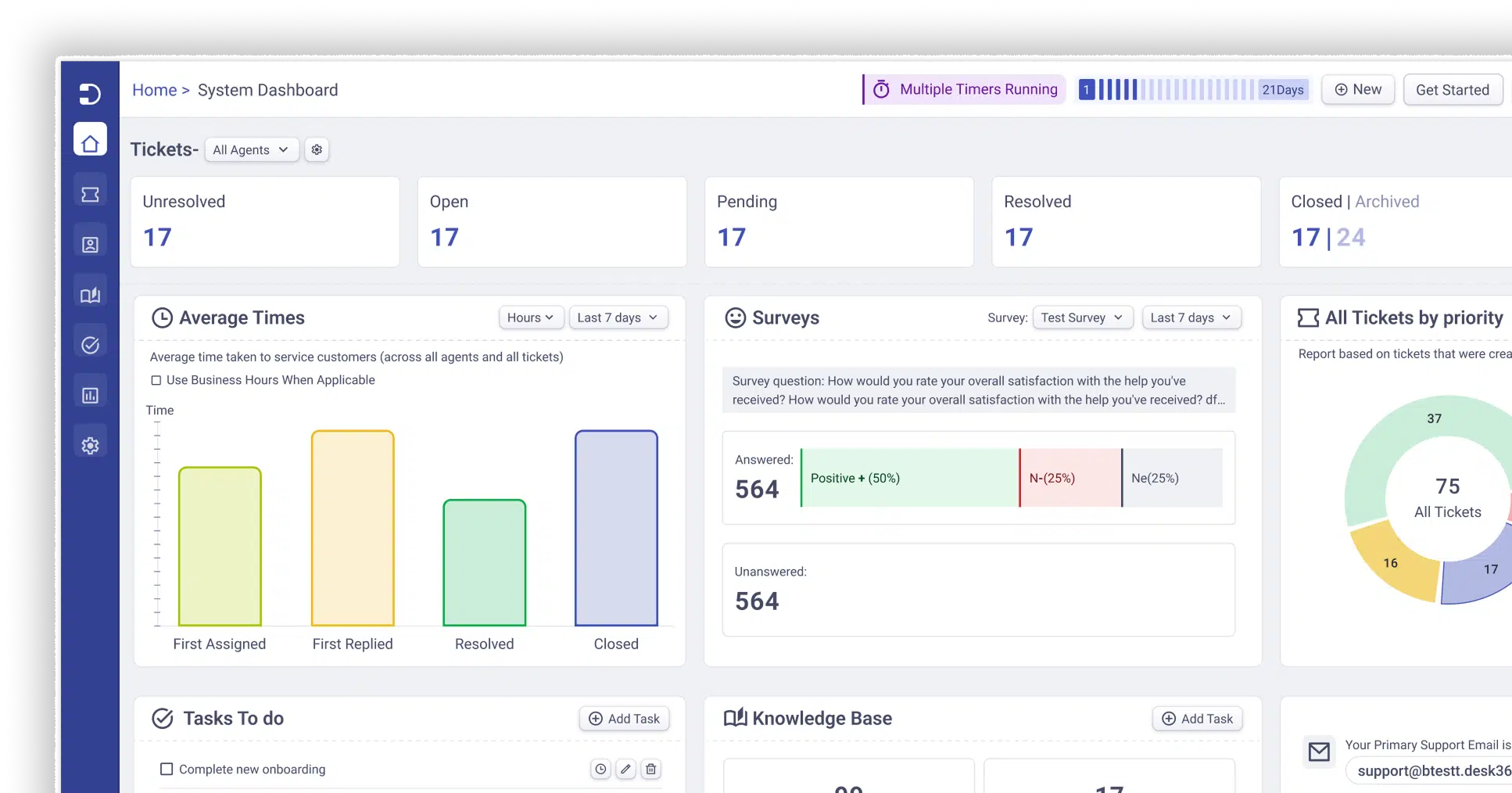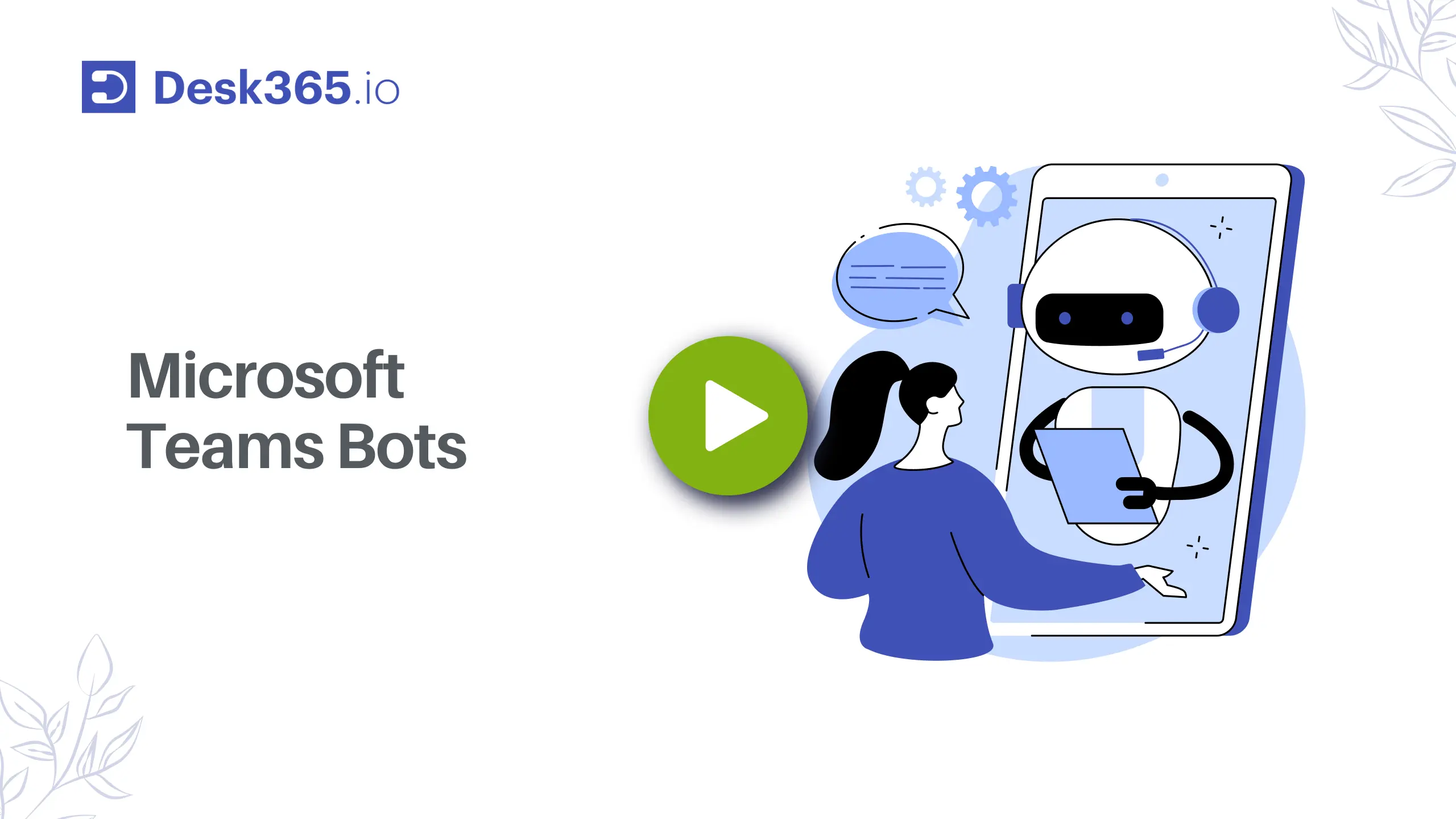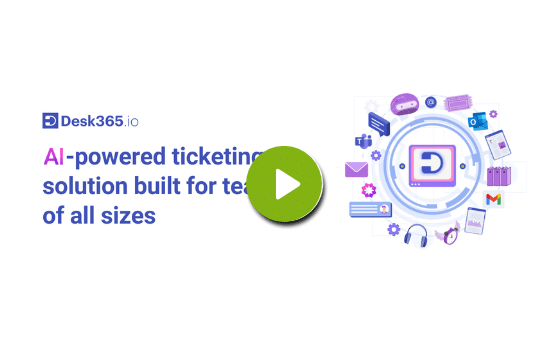In today’s fast-paced business environment, maintaining uninterrupted IT services is essential to keeping operations running smoothly. Any disruption, whether it’s a network outage or software malfunction, can significantly impact productivity and customer satisfaction. That’s where incident management comes in, a structured approach that enables IT teams to address and resolve these disruptions quickly and efficiently. By adopting an effective incident management process, organizations can minimize downtime, prevent recurring issues, and ensure a seamless experience for both employees and customers. In this blog, we’ll explore the key aspects of incident management, its benefits, and best practices to help streamline your IT support.
What is incident management?
Incident management is the process utilized by ITOps and DevOps teams to align an organization’s IT services with its business requirements. Incident management involves responding promptly to service disruptions, such as network outages or software malfunctions, and restoring normal operations swiftly. Additionally, it encompasses assisting employees with various technical issues like password resets or software glitches.
Incident management entails close collaboration with the service desk, including ticket classification, prioritization, investigation, and resolution. An effective incident management system incorporates self-service options, allowing employees to report issues seamlessly, which can then be assigned to the appropriate IT agents through automation. Moreover, it enables the configuration of Service Level Agreements (SLAs) when necessary.
Resolve issues faster and keep your business running smoothly
Enhance productivity and ensure continuity with our powerful incident management solution. Centralize support, automate assignments, and reduce downtime. Start your Desk365 free trial today!
Who uses an incident management system?
Employees typically reach out to the helpdesk when they encounter issues requiring support. The service desk comprises various agents, ranging from generalists to technical specialists and managers. Incident managers play a pivotal role in addressing support tickets, taking necessary actions, and restoring business operations to normalcy promptly.
Why is incident management important?
Incidents can disrupt operations and potentially lead to temporary downtime or data loss. Therefore, implementing incident management is crucial for all organizations.
- Swift resolution: By having clear IT policies, procedures, and automated workflows in place, incident management facilitates easy incident identification and quick assignment of incidents to the appropriate resolution teams, enabling prompt resolution.
- Easy access: Incident management provides employees with convenient channels to contact IT support, report issues, and track their progress via omnichannel such as phone, email, web forms, and portals. This enhances the overall employee experience.
- Improved efficiency: Incident management streamlines service restoration by enabling collaboration among the right agents on a unified platform. Incident data insights help optimize processes, monitor SLA performance, and identify areas for improvement.
- Preventing incidents: Learning from past incidents and documenting solutions in a knowledge base helps expedite future incident resolutions, reducing ticket volume and minimizing downtime. Integration with AIOps further accelerates Mean Time to Resolution (MTTR).
- Reduced downtime: A well-documented incident management process minimizes or eliminates downtime, ensuring smooth business operations.
- Enhanced employee experience: Seamless operations and minimal downtime contribute to a positive employee experience. Providing omnichannel support empowers employees to seek assistance and resolve incidents effectively, fostering a supportive work environment.
Incident management process
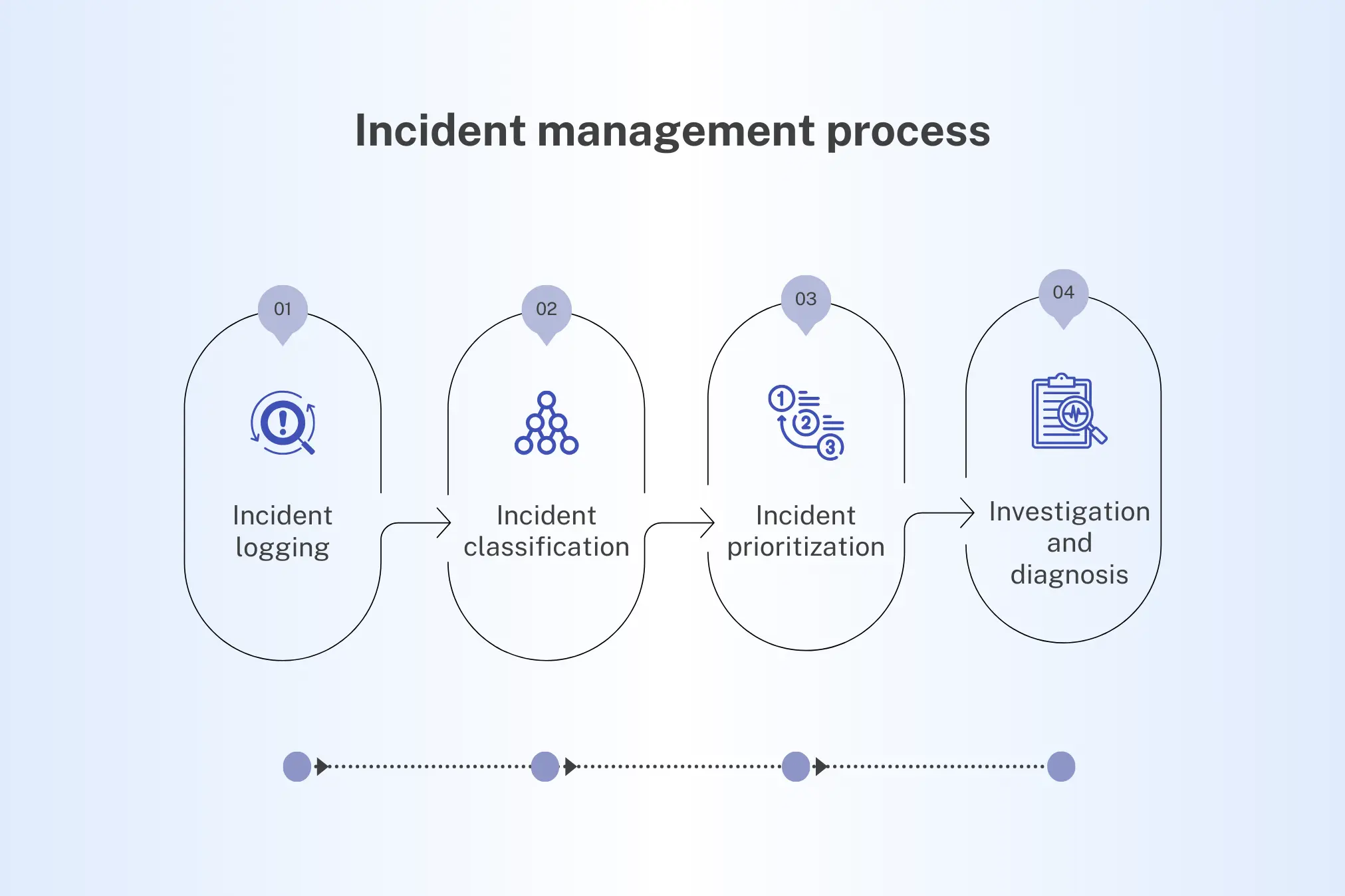
Every IT incident presents unique challenges, demanding a tailored approach for effective resolution. Establishing a consistent internal process for identifying, investigating, and resolving such incidents is crucial for organizational success. However, achieving this requires a well-defined workflow that aligns with the organization’s needs, streamlining the incident management process.
Incident logging
Whenever an incident arises, it’s imperative to promptly log it for record-keeping and analysis. This log captures crucial details like the date, incident ID, user information, and a comprehensive description of the incident. This documentation serves as a valuable resource for understanding how incidents are managed and prioritized in the future, aiding in regulatory compliance. The availability of omnichannel support and mobile reporting options significantly simplifies the incident reporting process for users, enhancing accessibility and efficiency.
Incident classification
Once an incident is logged, it undergoes classification by the IT team into distinct categories, facilitating efficient issue identification and resolution. This classification process not only enhances the organization’s knowledge base but also streamlines the support process for the future. Additionally, auto-assigning tickets using round-robin methodology enables equitable distribution of workload, fostering an efficient workflow.
Incident prioritization
IT organizations establish multiple SLA policies to systematically address service level breaches, ensuring organized handling of incidents. These policies help teams in assigning appropriate priority levels for incident resolution. Effective prioritization directly impacts SLA adherence, guaranteeing timely resolution and enhancing overall service delivery.
Investigation and diagnosis
A fundamental aspect of incident management is root cause analysis, the thorough analysis of incident root causes to expedite resolution. Leveraging a Knowledge Base serves as a vital resource during this process, providing readily accessible information that enhances first contact resolution rates. Furthermore, timely notifications play a pivotal role in keeping IT teams informed, enabling swift action and minimizing downtime. This proactive approach accelerates incident resolution, reducing overall resolution time and optimizing service quality.
Best practices in incident management
Following the best practices in incident management can make a difference in the way incidents are identified and they can be resolved before they turn into major problems.
- Consistent incident logging: Ensure all incidents are logged using a unified tool or platform, regardless of the reporting channel utilized by the user. This practice prevents fragmentation of incident data and facilitates retention of valuable knowledge for future incident resolution. Adopting an incident management tool with multi-channel capabilities expedites response and resolution times.
- Keeping categories and priorities clean: After logging an incident, promptly categorize it as either an incident, a service request, or a major incident to ensure it is routed to the appropriate pipeline for swift resolution. Additionally, prioritize incidents, and assign the correct priority level based on the impact and urgency of the incident. This proactive approach streamlines the incident management process, enabling efficient handling and resolution.
- Automate ticket assignments and save time: Utilize automation to streamline ticket assignments by directing them to the appropriate IT support agents based on the team member’s skillset, workload, or other predefined criteria. Implement escalation rules to automatically escalate issues when necessary, ensuring timely resolution. Additionally, enabling notifications keeps users informed about the progress of their requests, enhancing transparency and customer satisfaction while saving valuable time for IT teams.
- Establishing communication guidelines: Document clear and effective communication guidelines to provide a reference for agents, ensuring consistent and accurate communication throughout incident resolution. These guidelines should outline protocols for sharing information, verifying communication, and preventing loss of crucial information. By adhering to these guidelines, agents can maintain transparency, facilitate collaboration, and enhance information sharing without the risk of miscommunication or data loss.
How to choose the right incident management tool?
Choosing the best incident management software can be tough with so many options available. Here’s how to pick the right one for your needs:
Easily accessible with omnichannel support
The incident management software should be easy for everyone to use, not just IT people. It should let users reach out for help in different ways via omnichannel like email, a support portal, web forms, phone calls, or a web widget, whichever works best for them.
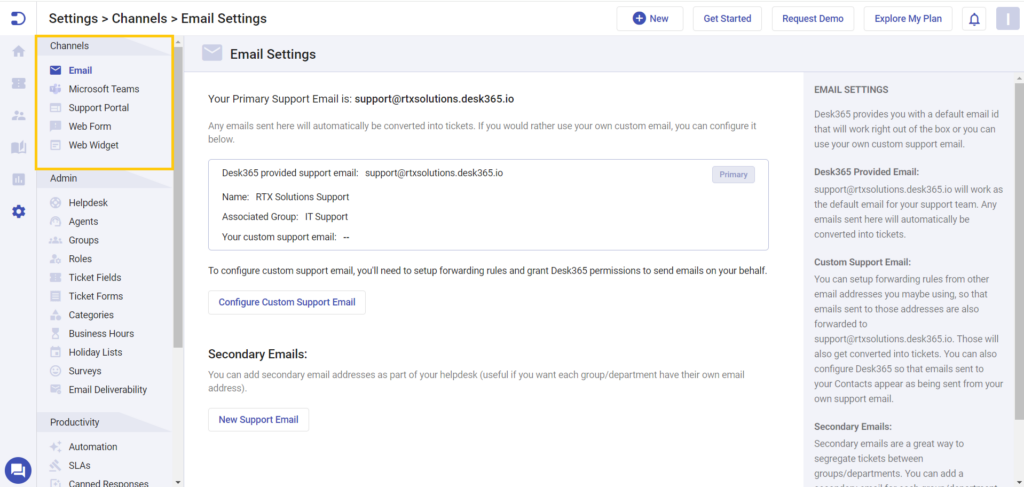
Unified inbox
A unified inbox lets agents see all the incidents and keep track of them until they’re fixed. It also helps them know who’s handling a ticket, the ticket priority, and the current status of the ticket.
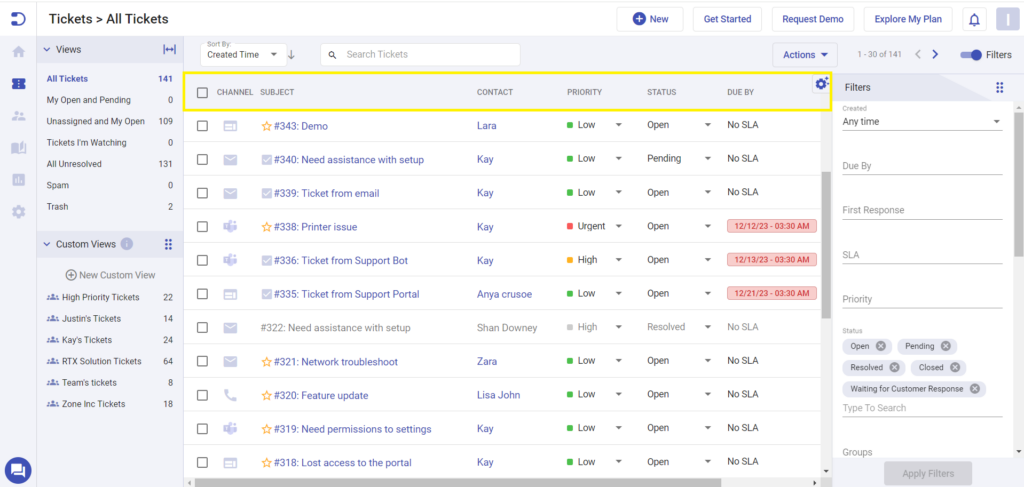
Instant notifications
It is common for users to expect updates after they have reported an incident. The notification feature in the incident management software plays an important role here. Setting up notifications for both agents and users keeps them on track with the ticket-keeping.
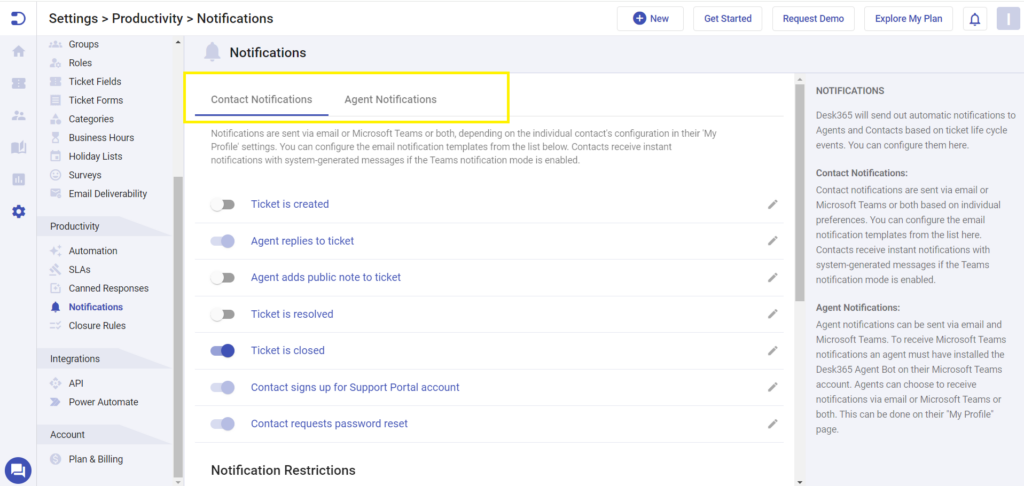
Robust knowledge base
A good knowledge base helps users solve issues on their own, cutting down on the need for agent intervention and reducing ticket volumes.
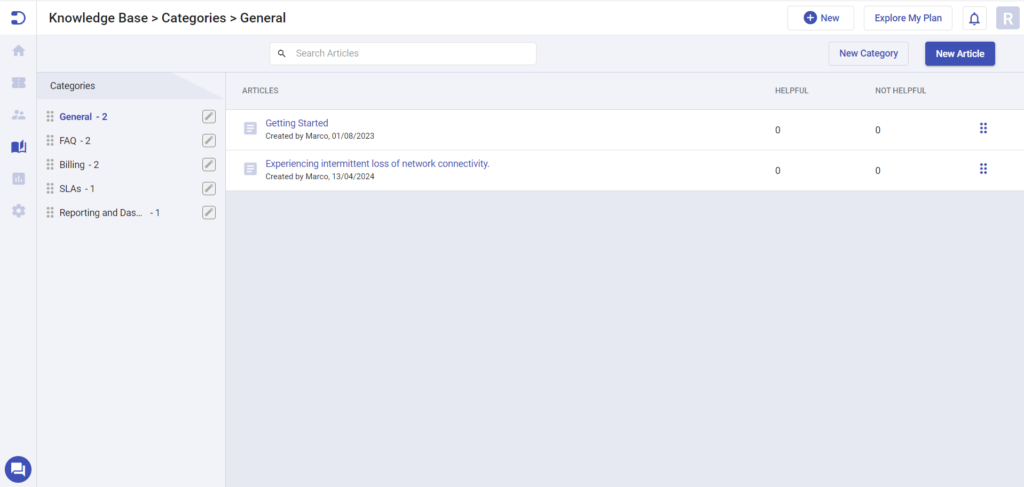
Automation
Automating tasks speeds up ticket resolution by assigning them to the appropriate agents using methods like Round-Robin and prioritizing urgent ones. This not only saves time for the IT team but also ensures quicker ticket closure, contributing to smoother business operations.
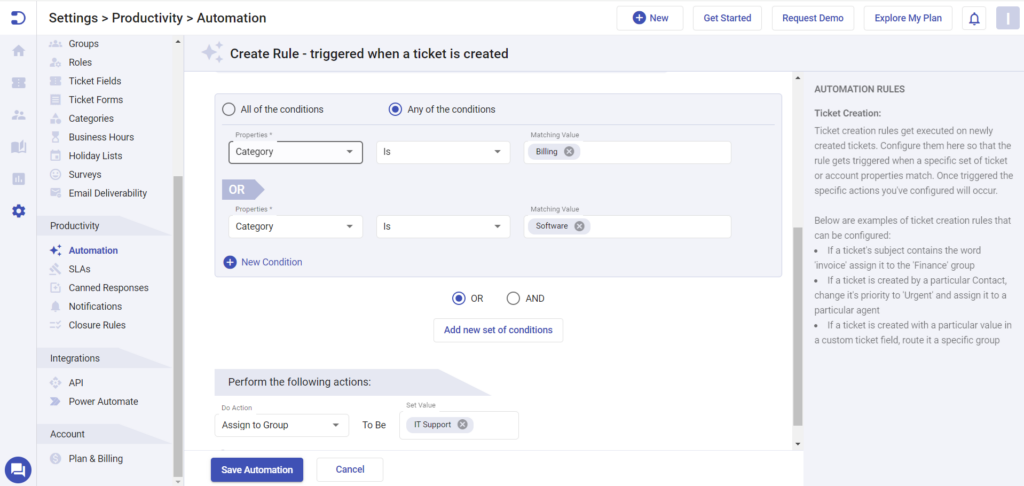
Integration
Integration is crucial for incident management software, allowing seamless connection with apps like Asana, Jira, Power BI, Azure DevOps, Microsoft 365 Copilot, and MS Planner. This enables automated workflows and facilitates data utilization for insightful reports, ensuring smooth operation alongside other applications.
Mobile compatibility
Ensure your incident management software works on both Android and iOS devices, as most agents and users prefer accessing it on their smartphones. This compatibility allows them to track ticket progress from anywhere, which is especially useful during emergencies.
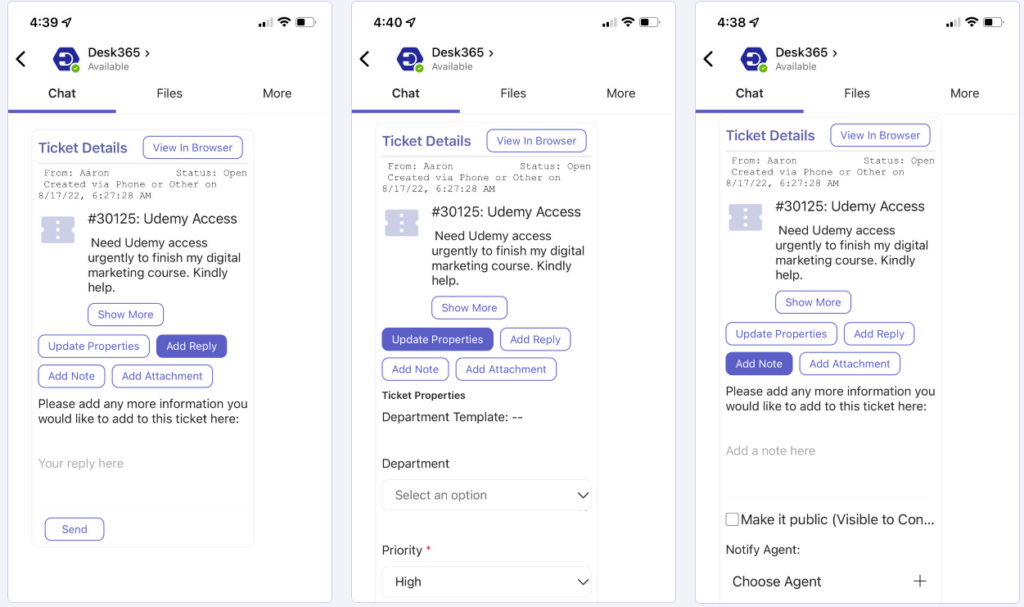
Incident management with Microsoft Teams and Desk365
Microsoft Teams serves as a powerful platform for enterprise communication, with integrated project management capabilities. Organizations can seamlessly integrate Microsoft Teams into incident management workflows, facilitating collaboration, incident tracking, and resolution of IT incidents.
Desk365 complements Microsoft Teams as a comprehensive incident management application, offering seamless integration to empower users and agents in managing support tickets directly within the Teams environment, ensuring SLA compliance. Desk365’s Microsoft Teams Ticketing System helps in assigning tickets, prioritizing them, automating, and tracking tickets until the incident is resolved.
Users can install the Desk365 application from the Microsoft AppSource or directly from Microsoft Teams.
Key features of Desk365 integration
- Conversational ticketing: Utilize the Desk365 Support Bot to convert messages into trackable tickets within Microsoft Teams, enabling users to easily create and communicate support requests.
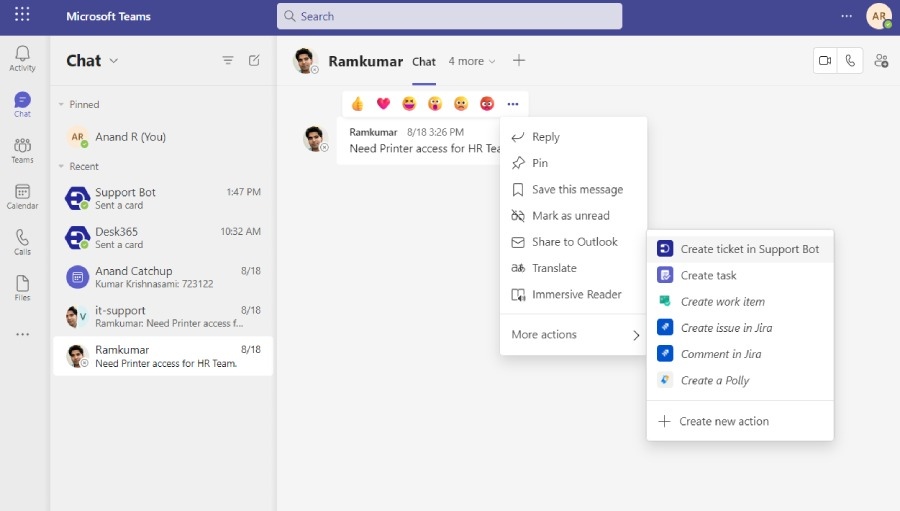
- Instant notifications: Receive real-time push notifications via Microsoft Teams, keeping users informed about ticket updates, while agents benefit from a unified inbox to manage queries efficiently.
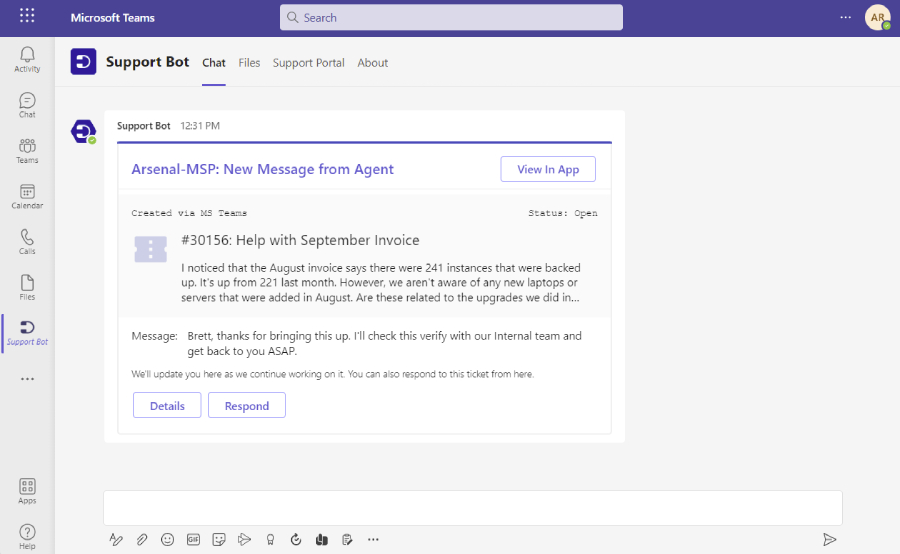
Centralized ticket collection: Gather tickets from diverse sources such as email, chat, and support portals within Microsoft Teams, consolidating all inquiries for streamlined management.
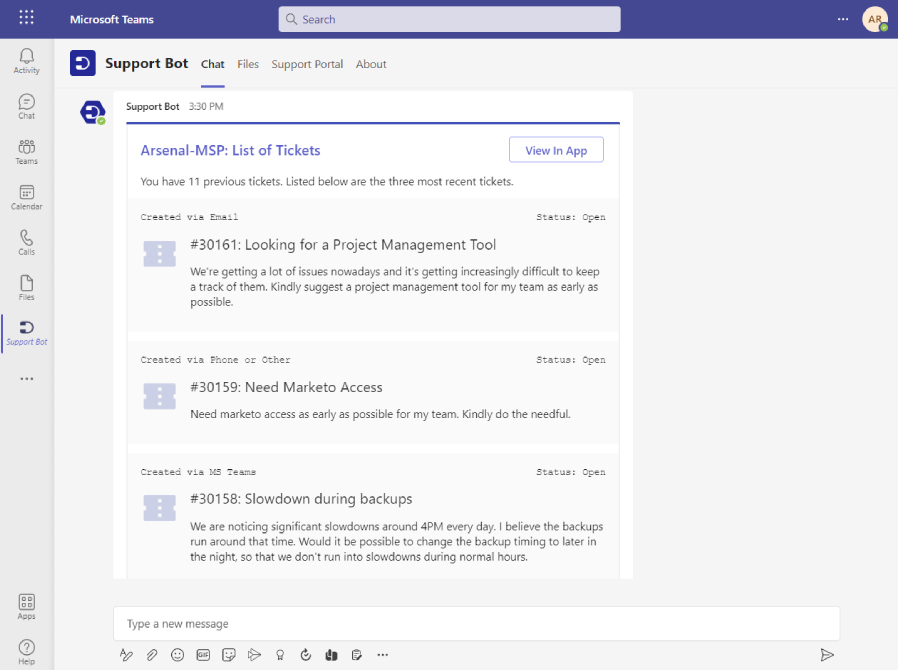
- Customizable ticket fields, forms & support bot: Tailor ticket fields and forms to specific requirements, leveraging Desk365’s customization options for differentiating forms across departments, enhancing flexibility. Customize the Support Bot with your own brand logo and theme color to match your brand guidelines.
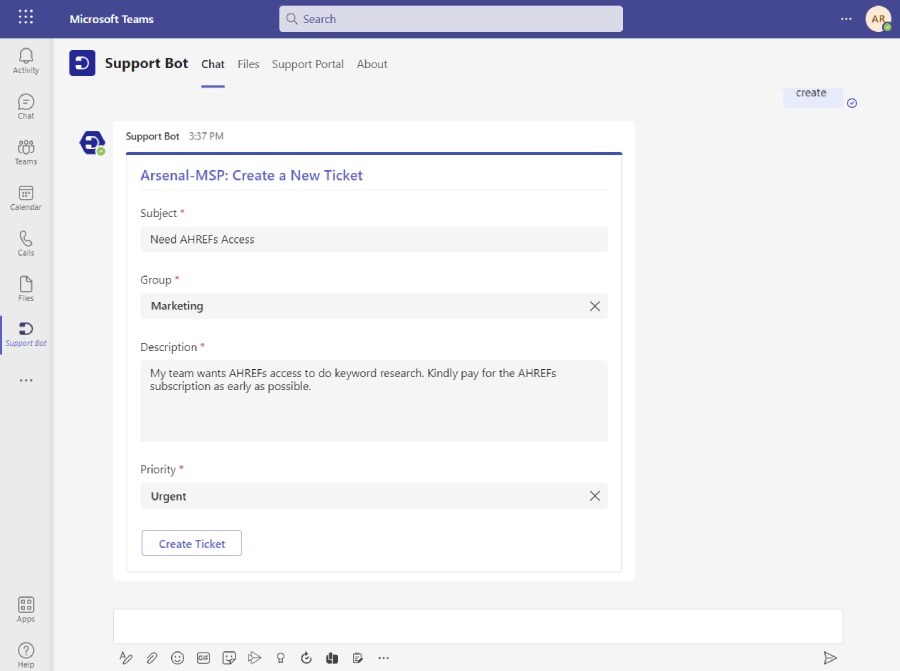
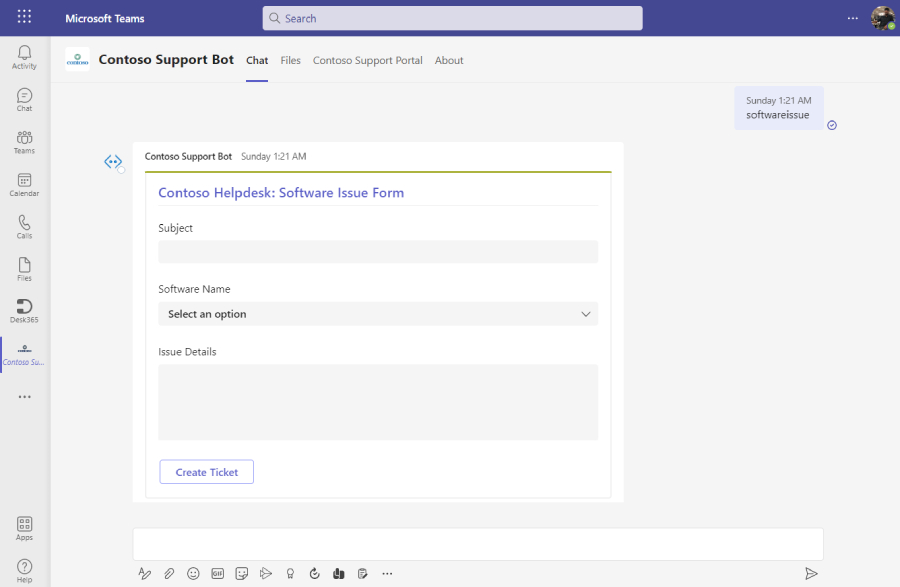
- Access support portal within teams: View all your tickets directly within Teams, eliminating the need to switch between platforms with seamless Single Sign-on through Microsoft Entra ID. Access solution articles from Knowledge Base, check ticket statuses, and perform various customer support tasks without ever leaving the Teams environment.
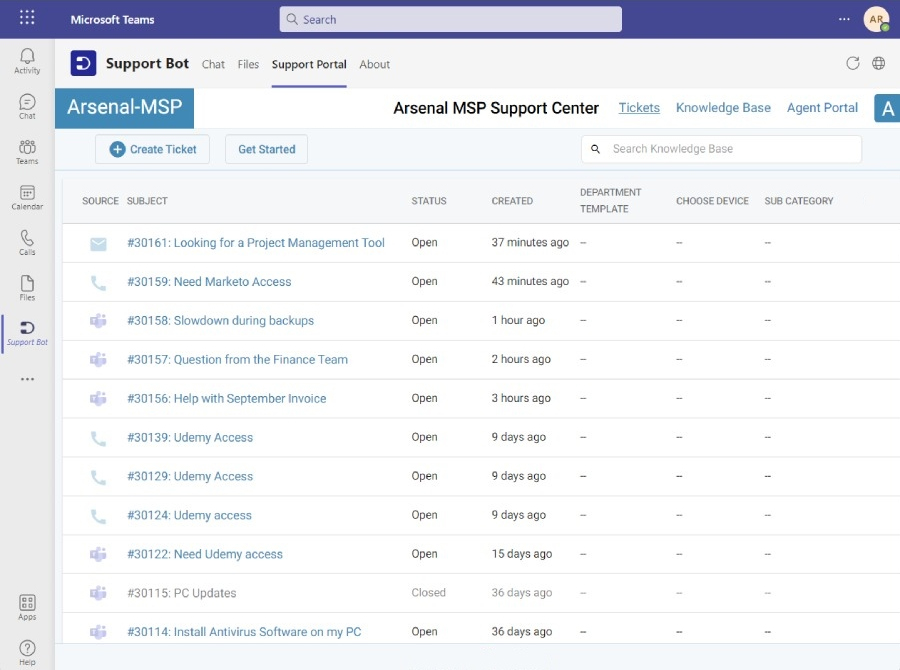
- Access agent portal within teams: Enable agents to perform all essential support tasks directly within Teams, from viewing and managing tickets to collaborating with team members—all in a single interface. By keeping everything centralized, agents can enjoy a streamlined workflow, enhancing both productivity and responsiveness without ever leaving the Teams environment.
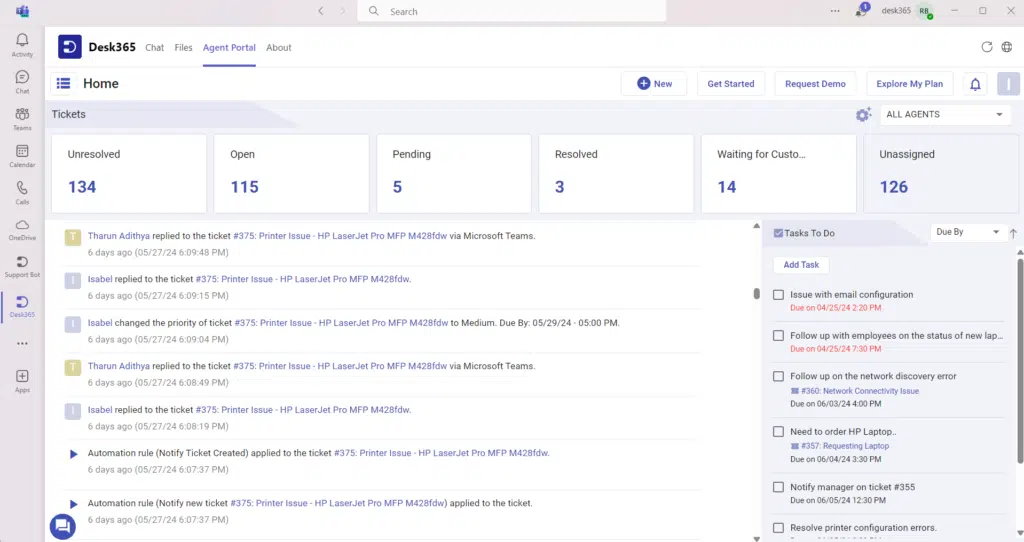
Furthermore, Desk365 offers native integrations with tools like Power Automate, Power BI, and Microsoft Entra ID. This integration enables organizations to leverage their existing Microsoft investments fully, enhancing efficiency and productivity in incident management processes.
Experience the power of Desk365 with a free 21-day trial. Gain exclusive access to a range of features and more. Start now and streamline your incident management process like never before.
Frequently asked questions
Incident management is the process of identifying, responding to, and resolving IT issues to restore normal operations quickly.
It minimizes downtime, improves employee experience, and ensures business continuity.
IT teams, incident managers, and support agents use these systems to resolve issues efficiently.


